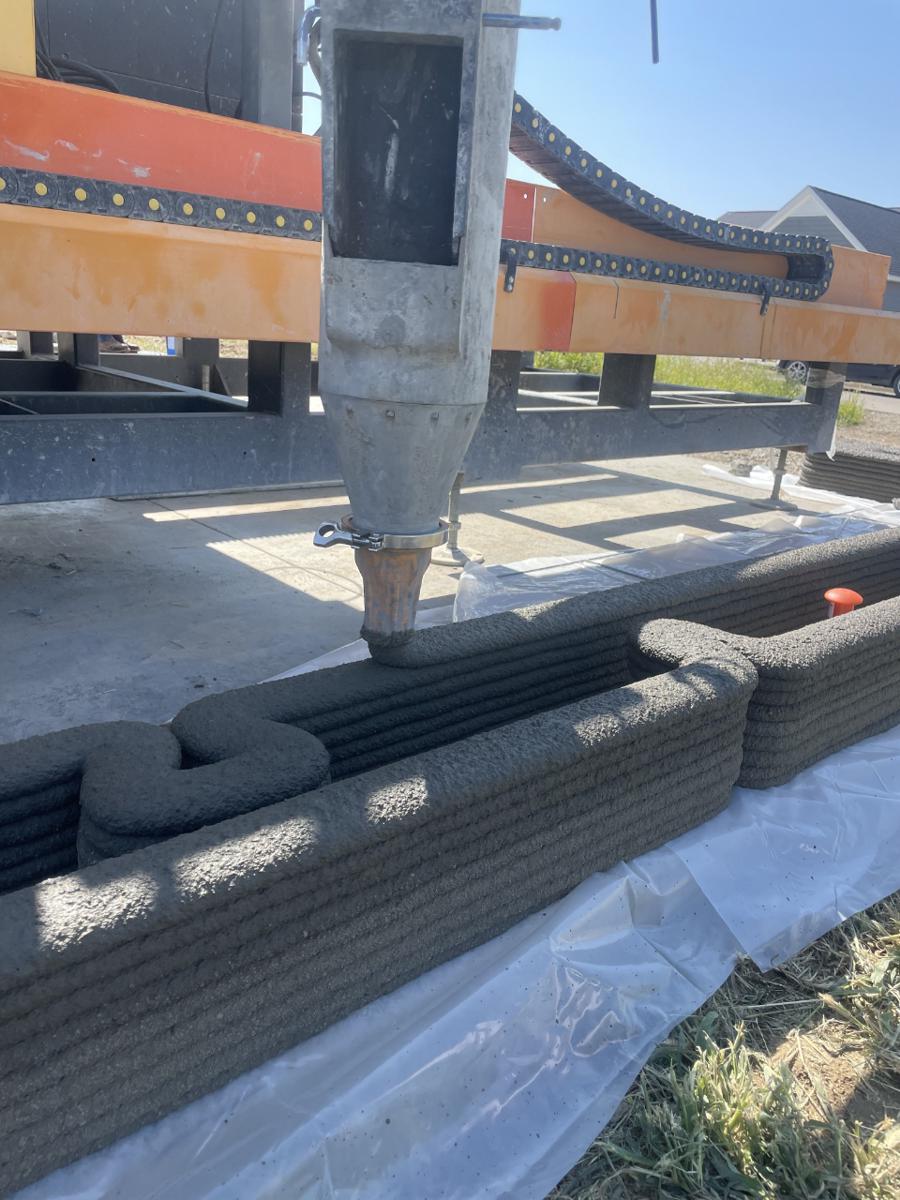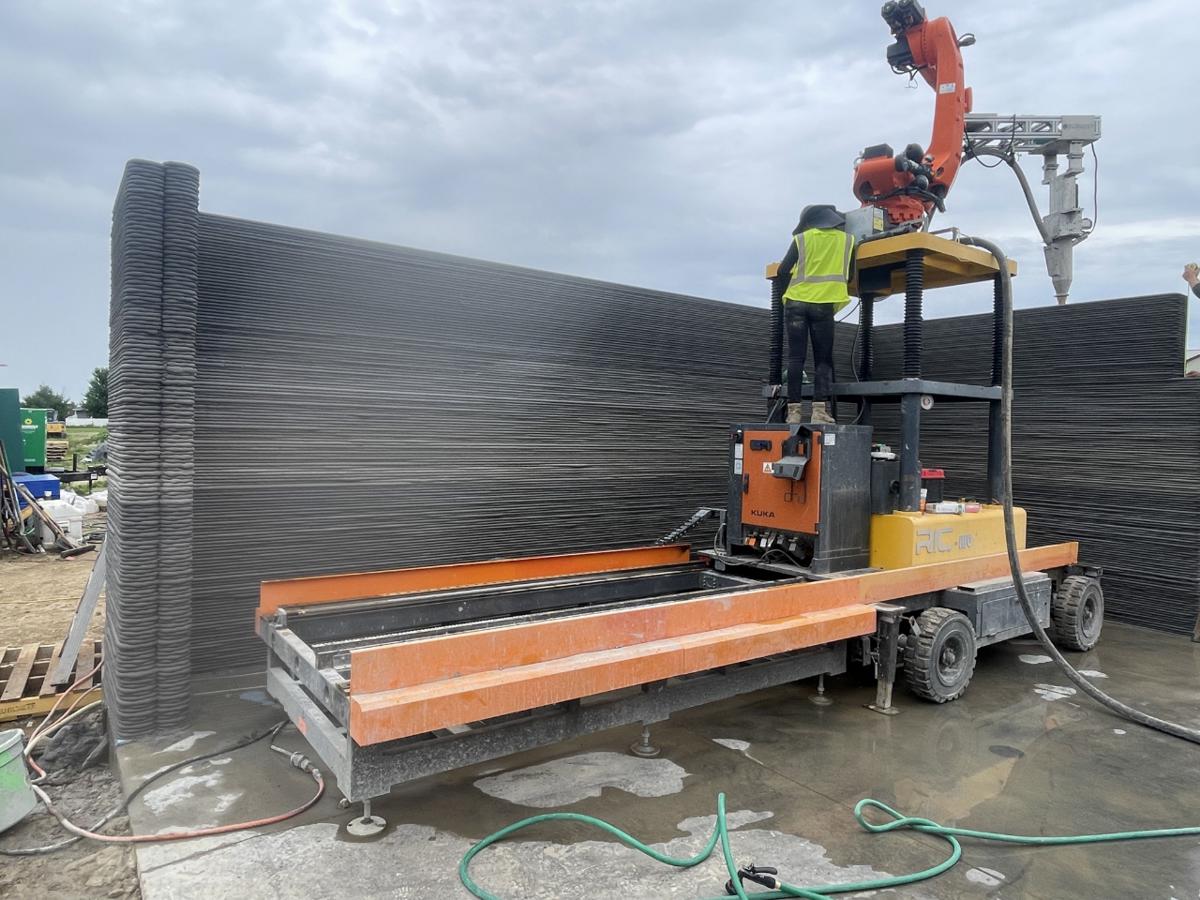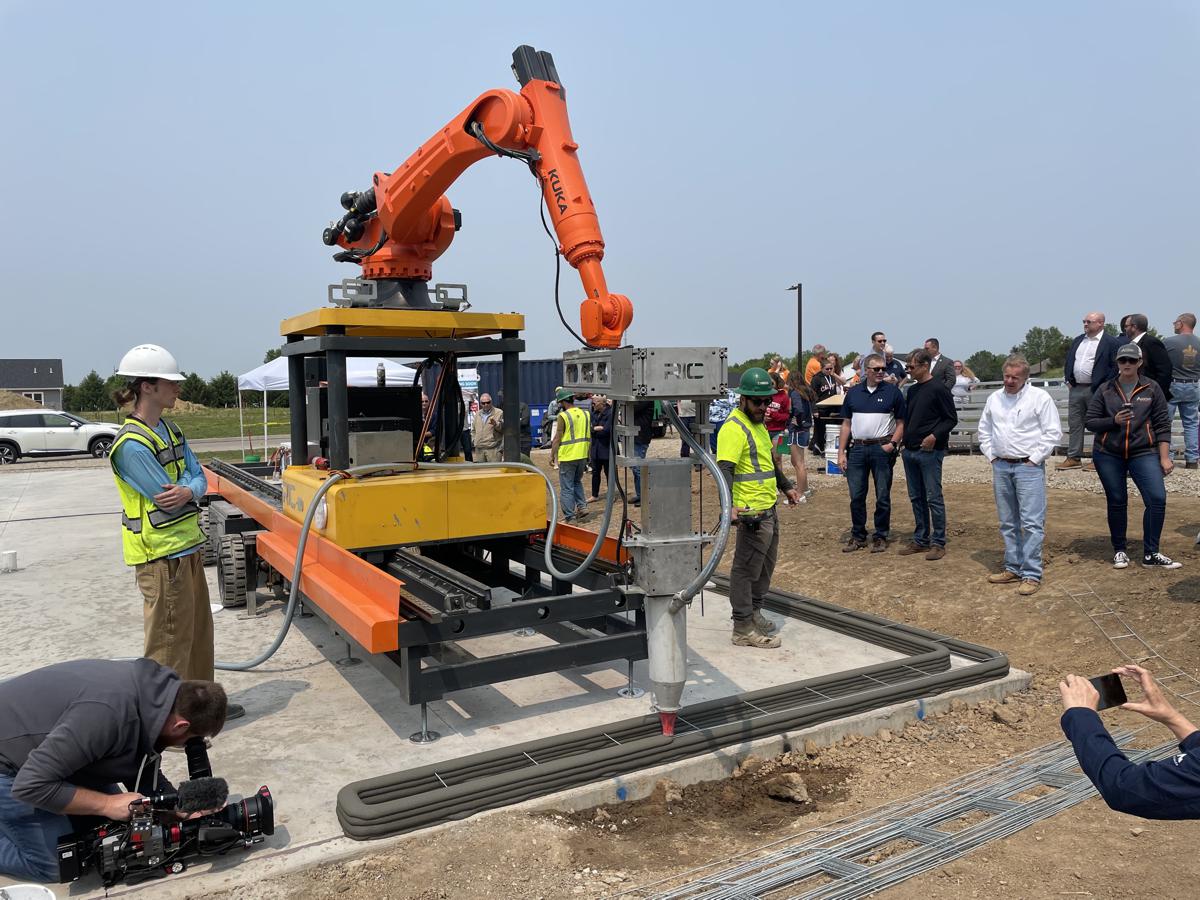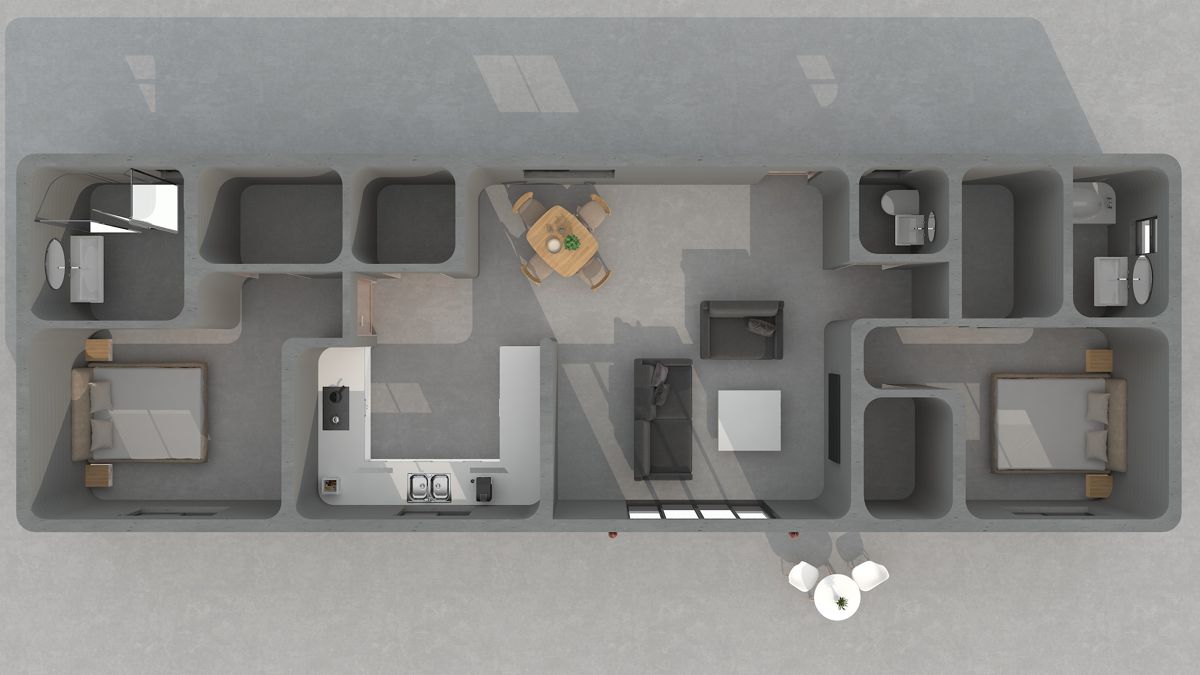Building fire-resistance with 3D Printed Concrete Homes in Los Angeles
In January 2024, the robotic arm 3D printer created by RIC Technology, a pioneering 3D printing company based in California, will be deployed to construct California’s first fire-resistant, 3D printed concrete ADU (Accessory Dwelling Unit) in Walnut, Los Angeles.
In collaboration with the City of Walnut and the Los Angeles County Fire Department, the general contractor Builtech Construction Group will lead this project from design to finish. K4K Construction Design will be the subcontractor responsible for 3D printing.
The most noticeable feature of this ADU is that it will be non-combustible and fire-resistant. Philips and Constance, a couple living in Walnut who are eager to contribute to wildfire protection, agreed to assist Builtech Construction Group in building a fire-resistant ADU in their backyard. This 1200 sqft ADU will include 2 bedrooms and 2.5 bathrooms.

“Seeing the state plagued by wildfires, we want to be part of the solution, too,” said Ziyou Xu, founder and CEO of RIC Technology.
He continued: “This project can be the beginning of something meaningful – a wider application of 3D printed homes that are less susceptible to fires.”
Wildfires are only going to increase in frequency and scale as humans scramble to deal with the consequences of global warming, calling for more and better ways to mitigate the risks of wildfires.

So far this year, California has seen 323,025 acres burned and 4 fatalities. In 2022, the federal government spent over $4 billion in firefighting costs (suppression only). However, the damage of a wildfire doesn’t stop when it’s put out; communities suffer from its aftermath for years.
For example, the 2018 Camp Fire in Butte County nearly wiped out the entire Town of Paradise. Those who stayed are still living in an RV and recovering after five years since their homes were destroyed in the fire.
“Fire-resistant homes reduce wildfire risks by enhancing resilience during a fire and speeding up post-wildfire recovery,” said Xu. “It significantly saves time and money in the recovery process if residents’ homes survive a wildfire.”

Most homes destroyed in wildfires are initially set ablaze by embers and minor flames. By reducing a home’s susceptibility to fire, the chances of a home surviving a wildfire are greatly increased, according to Wildfire Risk to Communities, a resources hub created by the USDA Forest Service to help communities identify and mitigate wildfire risks.
Aaron Liu, CEO of Builtech Construction Group and an NFPA-certified wildfire mitigation specialist (CWMS), has been dedicated to researching how to reduce a home’s susceptibility to wildfires.
“During wildfires, ‘heat’ and ‘oxygen’, two of the three components of the fire triangle, are beyond control,” explained Liu. “Therefore, our focus is on eliminating ‘fuel,’ the unique architectural design and building materials in this case.”

For this ADU, the exterior walls will be 3D printed using concrete, a non-combustible material. Additionally, the roof of the ADU will be constructed with light steel and sure-boards, distinguishing it from other 3D-printed homes that often feature wooden structural roofs.
Builtech will also strengthen the areas of a home that are traditionally vulnerable to fires, such as eave vents and windows.
“The ADU will be built without a single piece of wood or nail – no ‘fuel’ on the main structure,” said Aaron. “So we significantly minimize the likelihood of fire entering the home, reducing its susceptibility to fire.”

Successfully securing the permit, the Walnut project is expected to serve as a catalyst for further collaborations with local governments and fire departments, aiming to expand these fire-resistant constructions to more communities in California affected by wildfires.
In the future, RIC Technology plans to continue its partnership with Builtech Construction Group, focusing on the development of non-combustible, fire-resistant homes in wildfire-prone areas.



















